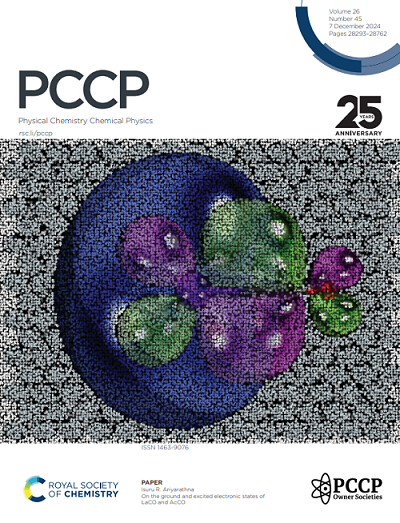Proton Transport in Liquid Phosphoric Acid: The Role of Nuclear Quantum Effects Revealed by Neural Network Potential
IF 2.9
3区 化学
Q3 CHEMISTRY, PHYSICAL
引用次数: 0
Abstract
Pure phosphoric acid exhibits high proton conductivity and is widely used in modern industry. However, its proton transport (PT) mechanism remains less understood compared to that of water, which presents a significant challenge for advancing technologies like phosphoric acid fuel cells. In this study, we utilize machine learning (ML) potentials and molecular dynamics (MD) simulations to investigate the proton diffusion mechanisms in liquid phosphoric acid systems. The neural network potentials (NNPs) we developed demonstrate quantum chemical accuracy and stability across a range of temperatures. Our simulations reveal continuous proton hopping between phosphoric acid anions. Moreover, the radial distribution functions (RDFs) and diffusion coefficients obtained from ring polymer MD (RPMD)—a variant of path-integral MD (PIMD)—exhibit improved alignment with experimental values compared to classical MD results, as RPMD inherently accounts for nuclear quantum effects (NQEs) on proton behavior. Additionally, we employed neural networks (NN) combined with the charge equilibration method to predict the charge distribution in liquid phosphoric acid, examining the PT mechanism through vibrational spectra analysis. These findings provide deeper insights into the high proton conductivity of liquid phosphoric acid.求助全文
约1分钟内获得全文
求助全文
来源期刊

Physical Chemistry Chemical Physics
化学-物理:原子、分子和化学物理
CiteScore
5.50
自引率
9.10%
发文量
2675
审稿时长
2.0 months
期刊介绍:
Physical Chemistry Chemical Physics (PCCP) is an international journal co-owned by 19 physical chemistry and physics societies from around the world. This journal publishes original, cutting-edge research in physical chemistry, chemical physics and biophysical chemistry. To be suitable for publication in PCCP, articles must include significant innovation and/or insight into physical chemistry; this is the most important criterion that reviewers and Editors will judge against when evaluating submissions.
The journal has a broad scope and welcomes contributions spanning experiment, theory, computation and data science. Topical coverage includes spectroscopy, dynamics, kinetics, statistical mechanics, thermodynamics, electrochemistry, catalysis, surface science, quantum mechanics, quantum computing and machine learning. Interdisciplinary research areas such as polymers and soft matter, materials, nanoscience, energy, surfaces/interfaces, and biophysical chemistry are welcomed if they demonstrate significant innovation and/or insight into physical chemistry. Joined experimental/theoretical studies are particularly appreciated when complementary and based on up-to-date approaches.
 求助内容:
求助内容: 应助结果提醒方式:
应助结果提醒方式:


